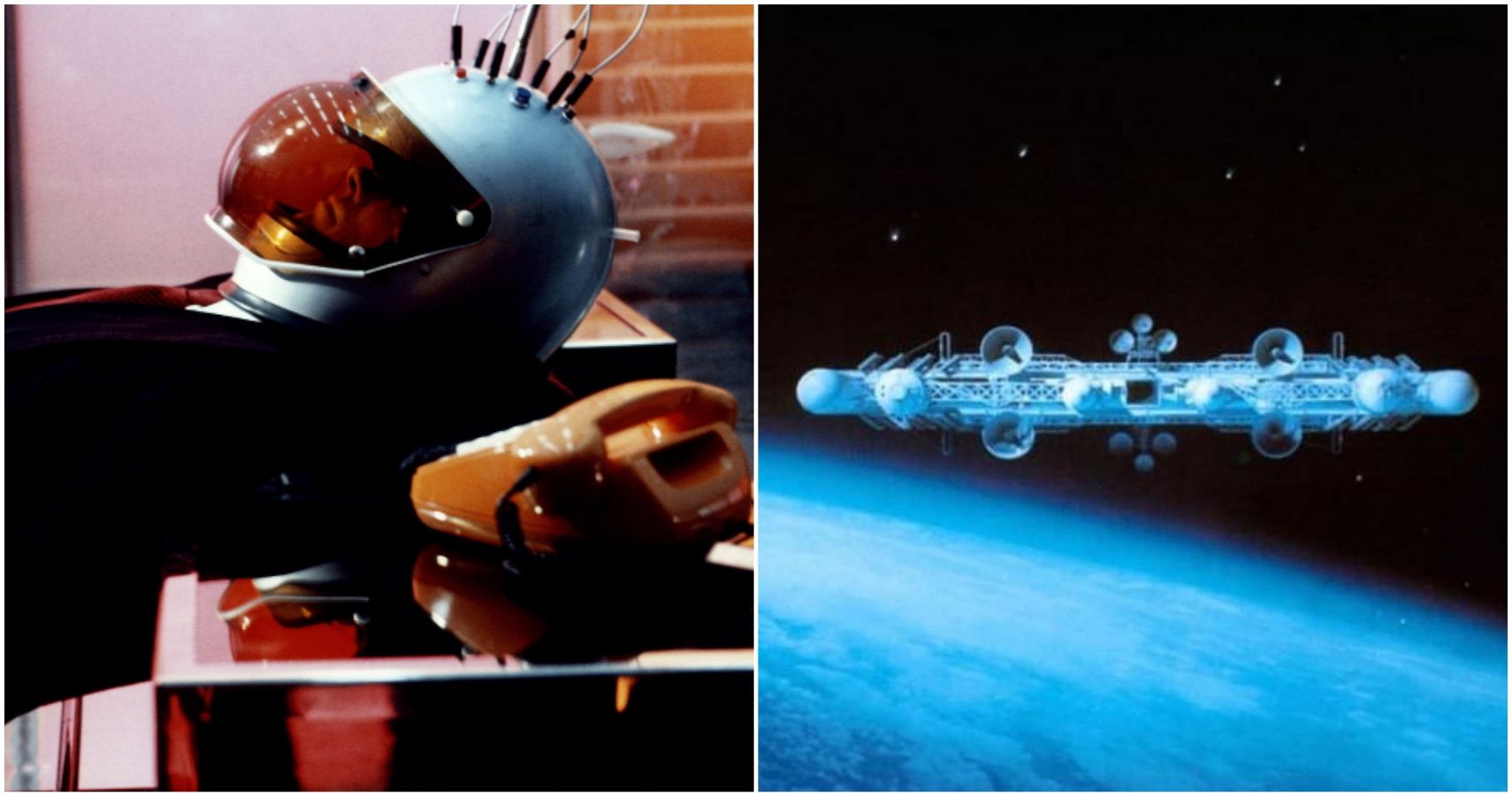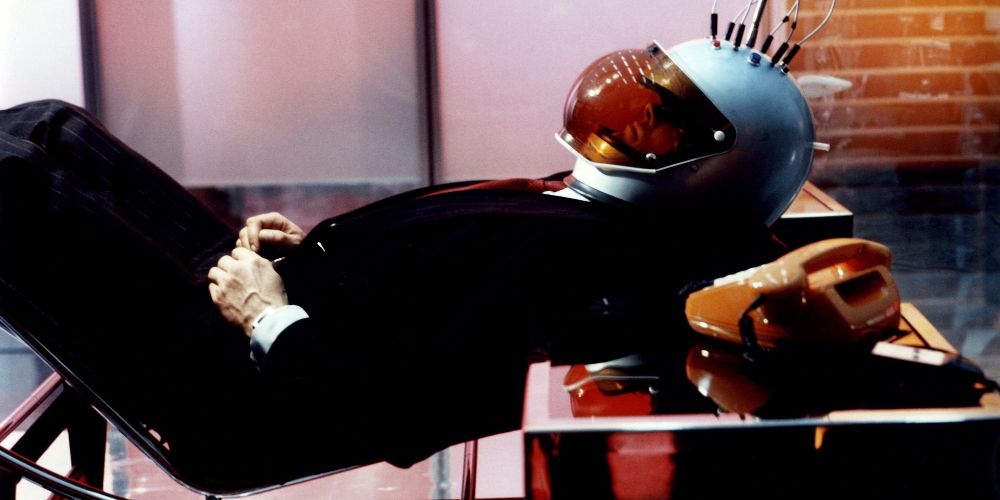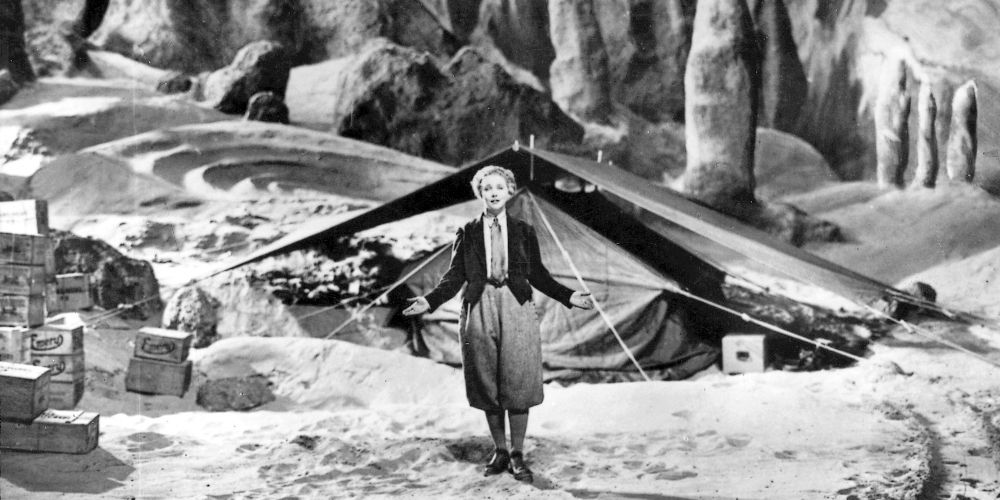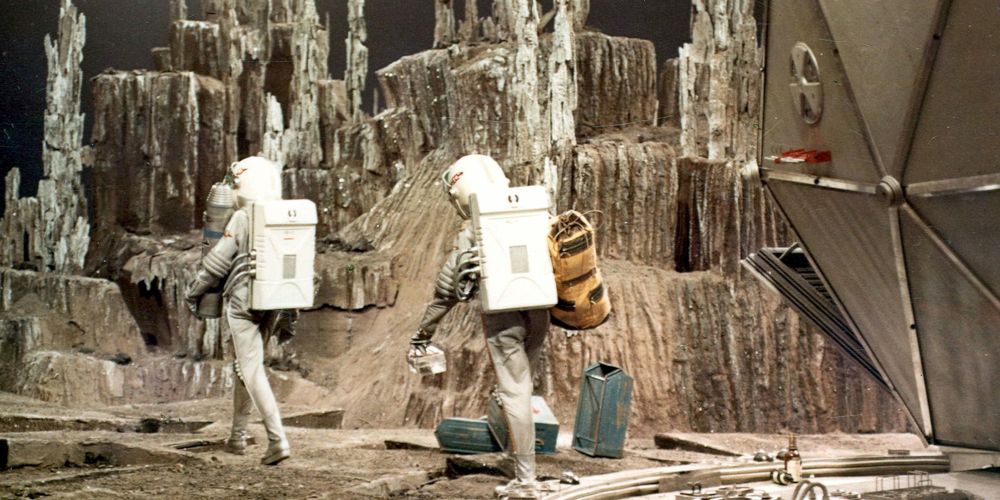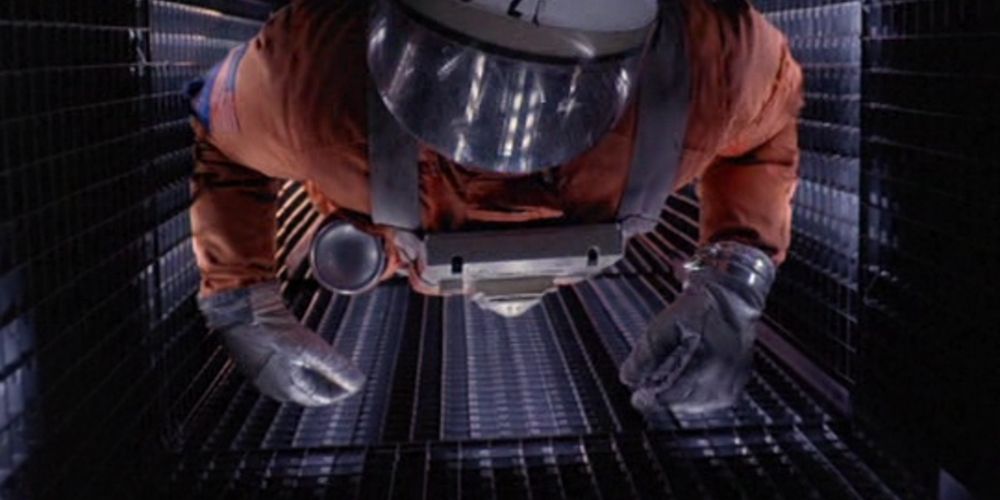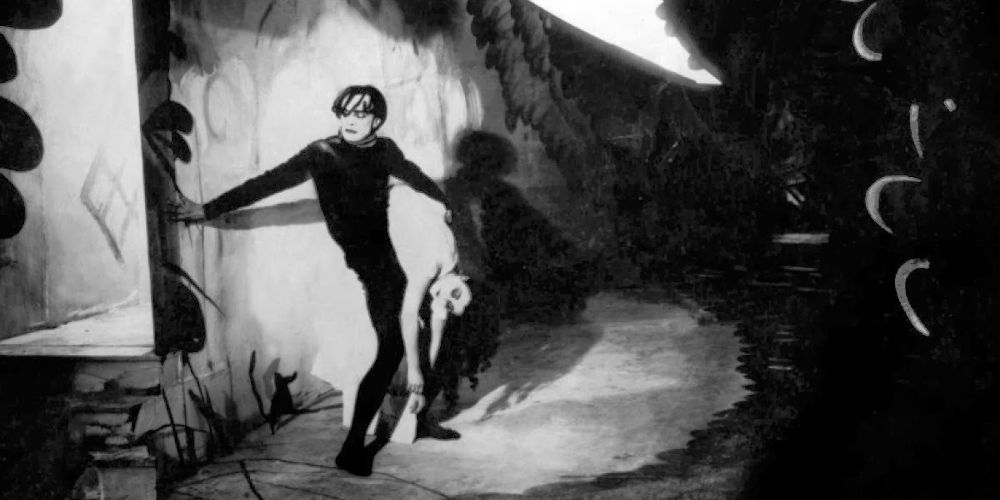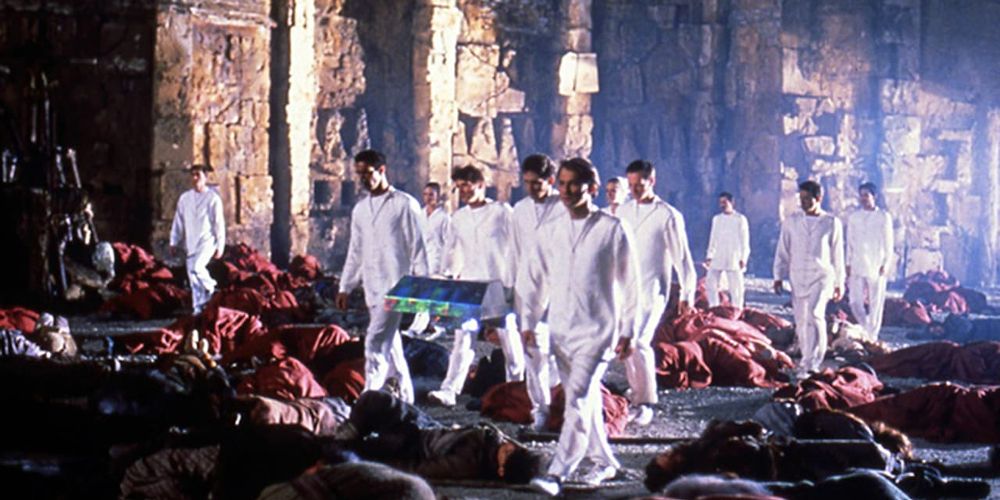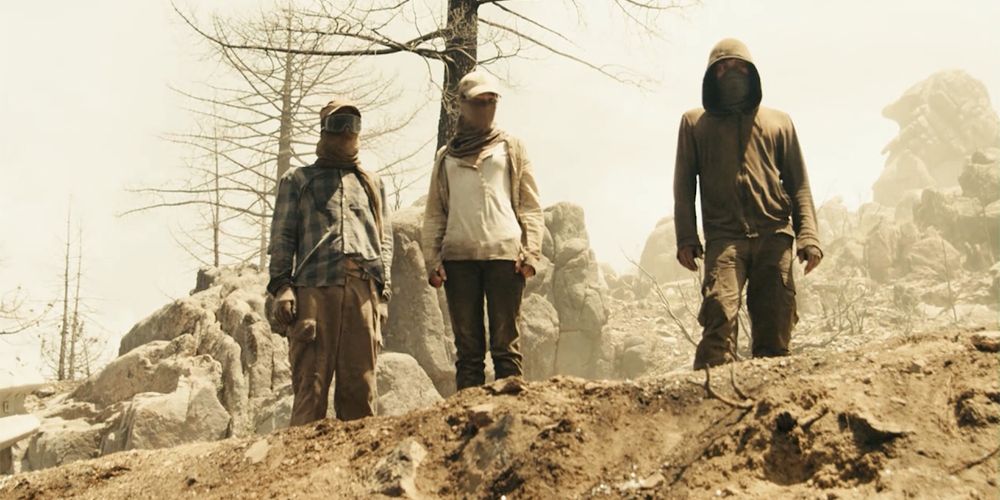Germany has a complex and arduous modern history, and cinema proves to be one of the best avenues for German artists to explore and indulge in this history. While Germany is known for its gritty attachment to realism and dark investigations of human nature in film, it also has a profound record of experimentation, one that reaches its apex with the science fiction genre.
After enduring World War I, the Nazi Party's fascist policies culminating in World War II, and a divided nation partially ruled by Communists, Germany has just in the past 30 years found its voice as a unified nation. The science-fiction films on this list reflect the tangled nature of German identity, spanning from the earliest days of cinema to recent years.
World On A Wire (1973)
The only science fiction feature from the acclaimed queer German director Rainer Werner Fassbender, World on a Wire investigates the limitations of humanity's relationship with technology. In the movie, The Institute for Cybernetics and Futurology develops a project called Simulacron 1, which allows them to predict the future with unbelievable accuracy.
When the scientist in charge of the project dies from suicide, a new man is brought on board to keep the project going. This man, Dr. Fred Stiller, soon begins to struggle with the same psychological issues that plagued his predecessor, raising serious doubts about Simulacron 1's viability.
Woman in the Moon (1929)
One of Germany's most prolific directors, Fritz Lang is best known for his masterpieces Metropolis and M, but he is also responsible for this mind-bending feature about a female astronaut who travels to the far side of the Moon. The woman is part of an expedition to search for gold on the rocky behemoth.
While the character development and plot aren't the most in-depth here, films like Woman in the Moon rely on visual spectacle more than any other element. In Fritz Lang fashion, the movie doesn't disappoint. It goes as far as depicting the centrifugal forces that affect the passengers on the ship as they embark on their journey, and the set designs once they land are lavish and detailed.
Eolomea (1972)
Eolomea is a fascinating space travel procedural made in East Germany under severe restrictions and with artistic limitations. In this deep space feature, a group of potential explorers is stuck in the middle of a battle between scientists and bureaucrats to begin a journey toward the titular planet, Eolomea.
The movie provides subtle, yet, scathing criticism of the types of government overreach that plagued East Germany until the Berlin Wall fell in 1989. It also includes some stunning and showy intergalactic set designs.
The Noah's Ark Principle (1984)
An eye-opening precursor to the conflicts and manipulations that would plague the Middle East in later decades, The Noah Ark's Principle takes place in the (then) far distant year of 1997. Western forces have worked together to bring technology to a space laboratory that has the ability to manipulate weather on Earth. Their hope is to use the technology to invade Saudi Arabia.
A rotating cast of scientists and laboratory technicians battle each other for control of the laboratory, some hoping to save the Middle East from the catastrophic flooding that will devastate it, while others are desirous to follow through with the original plan. Good thing that it's 2020, 23 years later after the events of the film, and there's no evidence of such technology in existence.
Gold (1934)
Gold revels in industrial and economic development. This ambitious film from Karl Hartl follows the trials and tribulations of an alchemical scientist attempting to turn lead into gold. The scientist, Hans Alber, builds a nuclear reactor with his assistant, and the device makes their efforts successful.
Idealistic about the implications of their invention, the pair hope to bestow wealth upon all of humanity. Instead, privileged investors who hope to keep the device for themselves bring the scientists to the conclusion that they must destroy their invention before it makes economic gaps even larger.
The Cabinet of Dr. Caligari (1920)
An abstract and performative silent era gem, The Cabinet of Dr. Caligari makes an influential and dream-like artistic statement. The title character is a hypnotist who travels with a circus and shows off his somnambulist, or sleepwalker, Cesare. It turns out that Caligari is forcing Cesare to commit murders at his behest.
The film is full of Expressionistic sequences and distorted set designs that add to the entranced nature of the movie's events. The angular and shadowy style of the movie proved to be a major inspiration for the noir films that came after it.
Hard to Be a God (1989)
This West German movie, filmed in the Soviet Union, focuses on life 1,000 years in the future. Humans have managed to extinguish all the hate and aggression that leads to warfare and conflict, and they hope to spread their new, anti-violence gospel around the universe.
When a group of space explorers meets an alien race mired in battles, they are exposed to violence for the first time in their lives. This epic film took six years to make and includes a cameo from Werner Herzog.
The Hands of Orlac (1924)
Directed by the same man responsible for The Cabinet of Dr. Caligari, Robert Wiene, The Hands of Orlac is another silent era masterpiece about a famed pianist who burns his hands in a car crash. A bizarre doctor offers him new hands. The pianist, unwilling to give up his career, accepts.
After the transplant, a series of strangulations happen around the pianist, and he comes to understand his new hands are the culprit. Possessed by some unknown force, they have turned him into a killing machine.
The Hamburg Syndrome (1979)
A science-fiction pandemic film, The Hamburg Syndrome deals with a strange affliction that is spreading through Hamburg with the force of the bubonic plague. While the exact nature of the affliction is never revealed, the film is really an exploration of how people treat each other when things hit the fan.
A group of disease scientists attempts to flee south in hopes of tracking down a cure, but they meet severe barriers along the way, from their own moral corruption to villainous clean-up crews.
Hell (2011)
A horrific modern science fiction film, Hell is about as unpleasant as it sounds. The Sun's growing proximity to humanity's home planet has created a sort of scorched Earth effect, and those remaining survivors are forced to wander the planet looking for water and sustenance.
After being offered a ride to a nearby reservoir, the trio at the center of the film finds itself in the middle of an ambush. They are forced to fight for their lives, no matter how much blood they spill.

